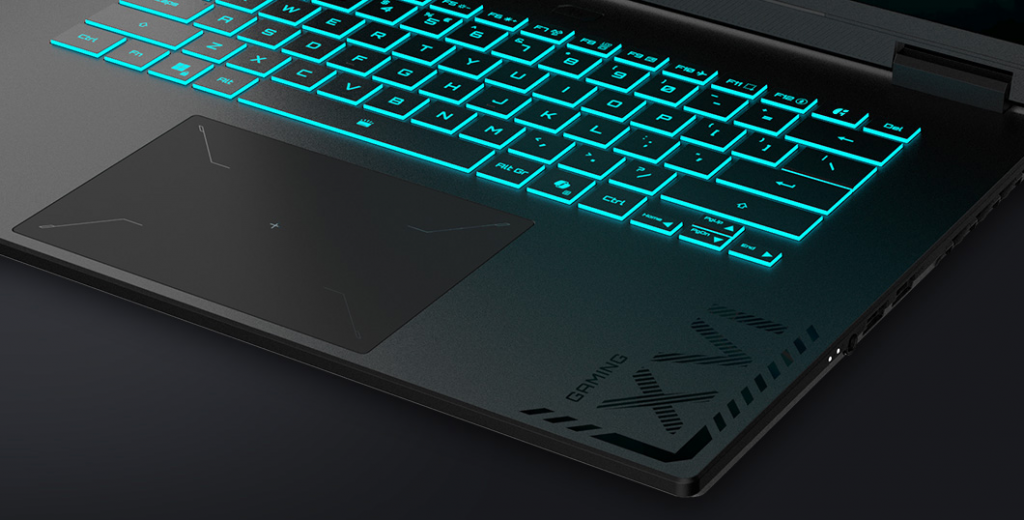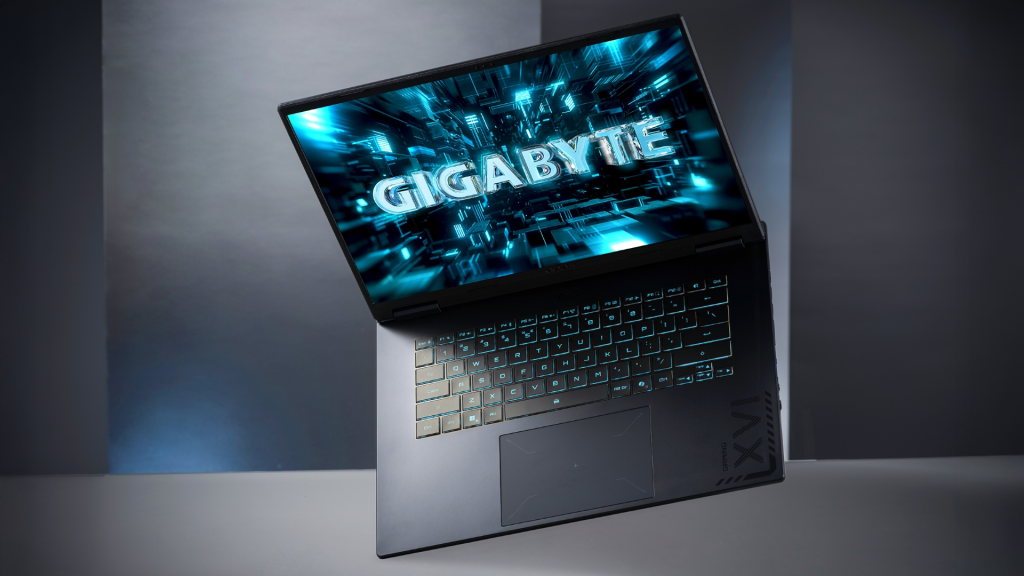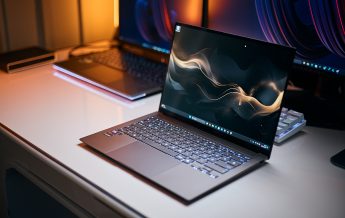
Gigabyte Gaming A16 Pro review: a pragmatic performance play that punches above its power envelope
Gigabyte’s Gaming A16 Pro arrives like a pragmatic hand in a market of flash: it doesn’t try to be the thinnest, loudest, or most flamboyant gaming laptop. Instead it makes a few smart compromises, most notably a deliberately restricted RTX 5080, and turns them into value. If you’re hunting for a 16-inch rig that feels modern without asking you to refinance your life, this might be the one.
Design and first impressions

The A16 Pro is unmistakably Gigabyte: no gaudy RGB circus, no chassis that looks like it was designed in a gaming-heavy fever dream. The chassis is a matte, angular slab that leans into restrained industrial styling. It’s lighter than a full-throttle desktop-replacement but not featherweight; the balance is practical rather than aspirational. The hinge feels reassuringly stiff, the lid opens with a single hand, and the keyboard deck gives a satisfyingly firm typing surface that’s better suited to work than the shallower, clicky keys you find on ultra-portable gaming machines.
Ports are generous without being theatrical. You get a full spread of USB-A and USB-C, a proper HDMI output for hooking into larger displays, and an Ethernet port that’s the unsung hero for anyone who treats network latency like a sacred trust. The 16-inch display embraces a slightly taller aspect ratio than old-school 16:9 panels, making it easier to juggle code, timelines, or multiple chat windows. It won’t win any awards for bezel design, but it’s discreet and functional: everything on this laptop says “work first, game without apology.”
Key tech features explained in plain English

On paper that’s a top-tier engine, but Gigabyte configures it with conservative power limits. Translating jargon into meaning: the GPU will not always run at the highest possible wattage, which keeps thermals and fan noise in check and lets the laptop keep its weight and battery life reasonable. The result is a machine that can get very close to flagship frame rates in many titles, but doesn’t try to blow past them with reckless power usage.
Complementing the GPU is a platform built around modern internals: a high-end CPU well suited to both single-threaded and multi-threaded tasks, fast NVMe storage that makes app launches and project loads feel instant, and a RAM configuration that avoids cheap shortcuts. The display is a responsive, high-refresh panel that favors clarity and color accuracy over outright brightness stunts. Add in pragmatic thermals, a competent audio setup, and a camera that is perfectly usable for calls and streaming, and you have the skeleton of a laptop that’s as comfortable on a Slack call as it is in a Steam library.
Performance in real-world use

Here’s the nuance: in many games and GPU-heavy workloads the A16 Pro behaves like a card that’s architecturally ahead of its competition because it’s based on a newer GPU generation. In long gaming sessions its restricted power profile means frame rates will drift toward the sweet spot rather than chasing peak numbers. For AAA titles at 1440p you can expect consistently high frame rates at high settings, and toggling ray tracing on will mostly be manageable thanks to the GPU’s underlying capabilities. For creative work: video editing, GPU-accelerated rendering, and large image processing, the GPU’s architecture gives a noticeable uplift versus older mobile chips, even if it’s not the absolute fastest option available.
Thermals are handled with practical engineering rather than spectacle. Fans ramp in a sensible curve and the chassis temp distribution favors the underside and rear exhaust, which keeps the keyboard and palm rest comfortable. Noise is not whisper-quiet under load, but it’s less intrusive than some more aggressively tuned machines. Battery life is equally pragmatic: you’ll get through a workday with moderate use, but don’t expect marathon sessions away from a power outlet if you intend to game heavily.
What stands out and what surprises
Two things stood out during testing. First, the A16 Pro’s ability to marry near-flagship GPU architecture with a price that sits in the more affordable tier is a rare combination. It’s one thing to offer a powerful GPU; it’s another to tune the hardware so that you get most of the benefits without the usual thermals and battery penalties. That balancing act is the product’s quiet superpower.
Second, the everyday usability choices surprised me. Gigabyte didn’t just ship performance and call it a day. The keyboard is comfortable for long typing sessions, the trackpad is dependable, and the display strikes a sensible balance between gaming snappiness and content-creation color. That may sound like table stakes, but in a segment where vendors sometimes prioritize RGB and marketing over ergonomics, these decisions feel refreshingly mature.
Any compromises or room for improvement

The biggest compromise is the GPU’s deliberate throttling. If you’re a competitive gamer who needs every single frame at the highest clocks or a creative pro who depends on the very fastest GPU render times, there are more powerful machines. Those alternatives will be heavier, louder, hotter, and significantly more expensive, but they will also deliver raw peak performance that this laptop intentionally avoids.
Another area for improvement is the display brightness and peak contrast. It’s a great panel for internal use and for most creative work, but if you spend a lot of time outdoors or in very brightly lit rooms, you’ll notice the limits. The speakers are serviceable, but anyone serious about immersive audio will still want a decent headset. Finally, while the A16 Pro keeps thermals sensible, there’s still a thermal cap: prolonged, heavy rendering workloads will cause performance to settle at a steady state rather than sprinting through tasks.
Best use cases and target user
The A16 Pro is for people who want modern GPU architecture without the headline-grabbing extremes. If you create content on the side and game most evenings, this is a compelling machine. It’s also attractive to the professional who needs a laptop that can run heavier workloads when required but isn’t a dedicated workstation. Students studying game development, designers who juggle Adobe suites, and mid-tier streamers who want solid frame rates without an orchestra of fans will find the A16 Pro hits a productive middle ground.
If you make your living from GPU render time or you’re chasing competitive eSports frames-per-second supremacy, you’ll outgrow the A16 Pro quickly. For everyone else who values quiet efficiency, sensible thermals, and a price that doesn’t punish you for wanting reputable hardware, this laptop is a strong fit.
How it compares to others in its category

Compared to ultra-premium machines like the Razer Blade or high-end ROG models, the A16 Pro is less about flex and more about proportion. Those flagship laptops often win on raw benchmarks and peak clocks but come with compromises in battery life, heat, and cost. The A16 Pro’s strategy is to sit close to that upper tier in capability while keeping real-world ergonomics and price firmly in view.
Against mainstream value-focused gaming laptops, it’s often a step ahead. You get newer GPU architecture, higher-quality build choices, and smarter thermal tuning than many mid-range machines that simply toss in a mid-tier GPU and call it a day. Put differently, the A16 Pro is one of the more sensible options if you want something that won’t be obsolete in a year but also won’t collect dust in your closet because it’s too loud or too hot to use daily.
Why it’s worth your attention now
We’re at a moment where GPU architecture is advancing quickly, and laptop vendors are experimenting with how best to package that raw silicon for real-world users. The A16 Pro is noteworthy because it represents a pragmatic approach to that problem. Rather than competing in a race to the top where fans scream and batteries melt, Gigabyte has chosen to temper peak capability with everyday usability. That’s a sensible response to a market where many buyers are tired of trade-offs that favor specs over experience.
Pricing strategy matters here as well. By landing the A16 Pro in a price bracket typically occupied by historically lower-tier GPUs, Gigabyte turns perceived numbers into actual value. Buyers get next-gen benefits in workloads that matter day-to-day, improved ray tracing efficiency, better encoding for streams, snappier creative tool performance, without the usual financial and thermal hit attached to absolute top-tier machines.
Conclusion
The Gigabyte Gaming A16 Pro is not a headline-chasing showpiece. It’s a considered, well-executed laptop that offers much of the upside of new GPU generations while sidestepping many of the headaches that come with maximalist performance tuning. It’s designed for people who want their tech to be an enabler rather than a spectacle. That focus makes it one of the more compelling buys in its class: equally at home on a desk for productivity, on a couch for gaming, or on a coffee shop table for editing a short video.
If you crave the fastest possible mobile GPU and are indifferent to noise and heat, look elsewhere. If you want a modern 16-inch machine that feels fast, stays composed, and doesn’t make unnecessary sacrifices in comfort or price, the A16 Pro is a smart, strategic choice. It’s the kind of laptop that quietly gets the job done and then some, precisely the sort of product you want when you care about both performance and the rest of your life.







